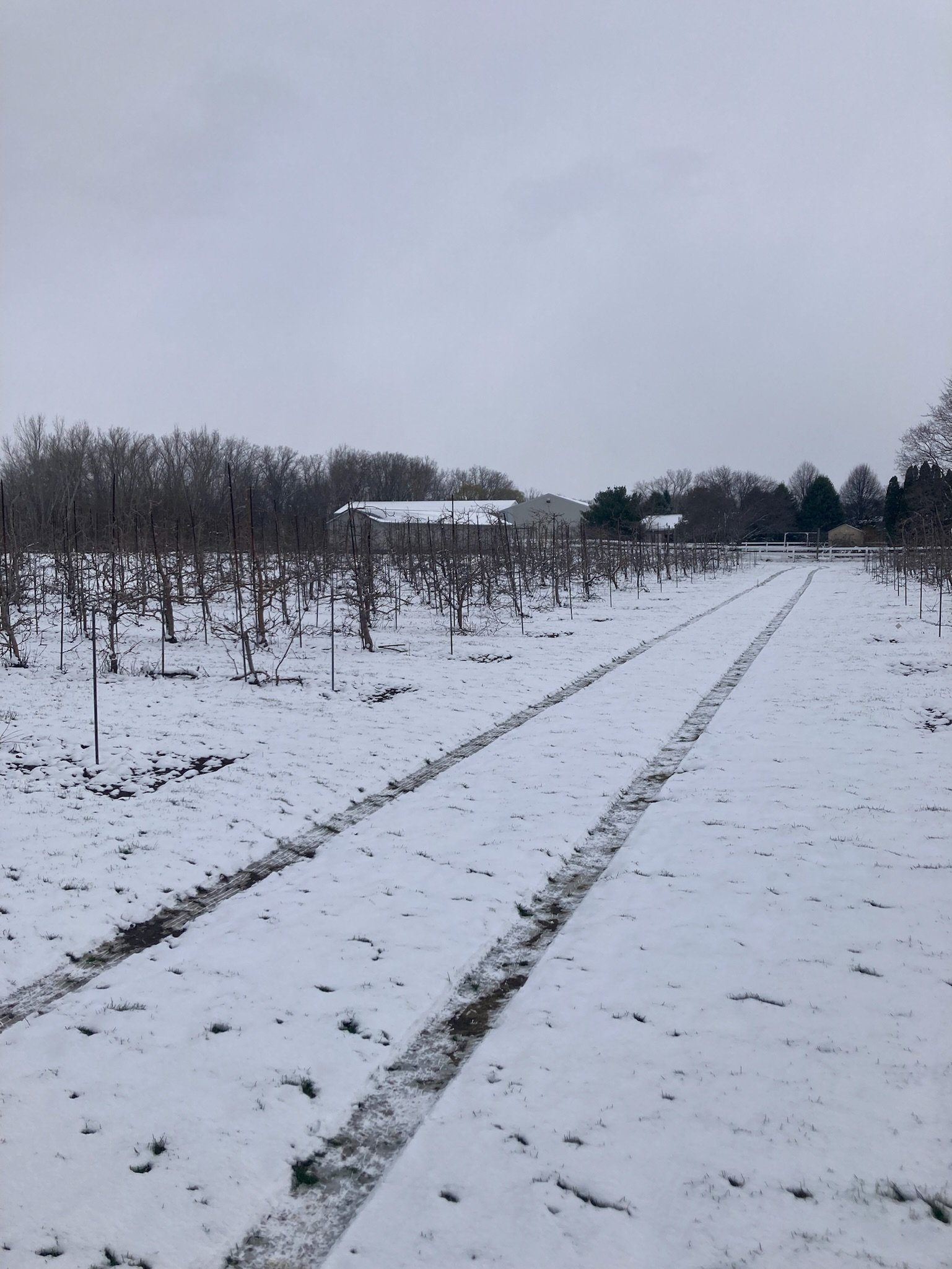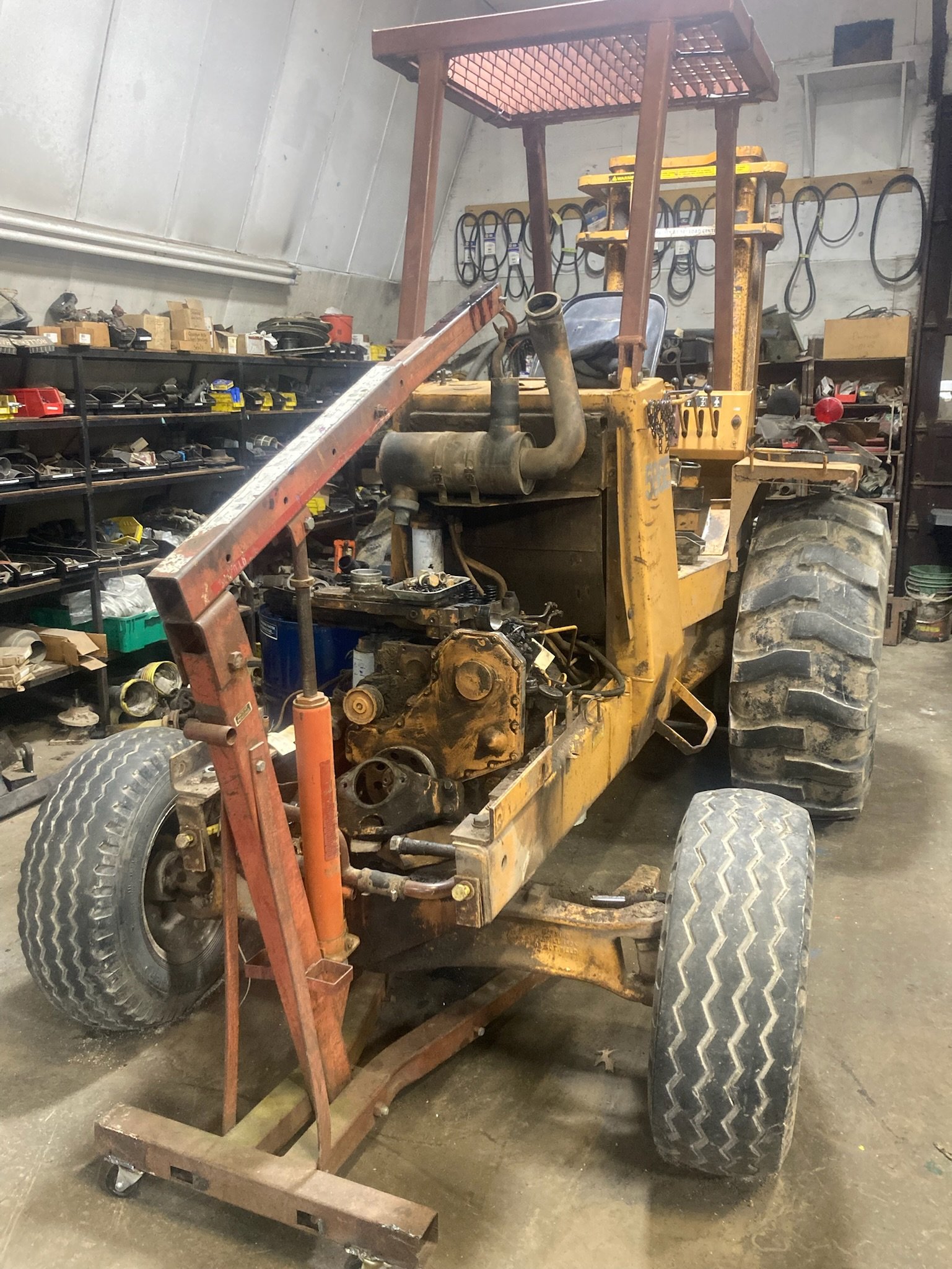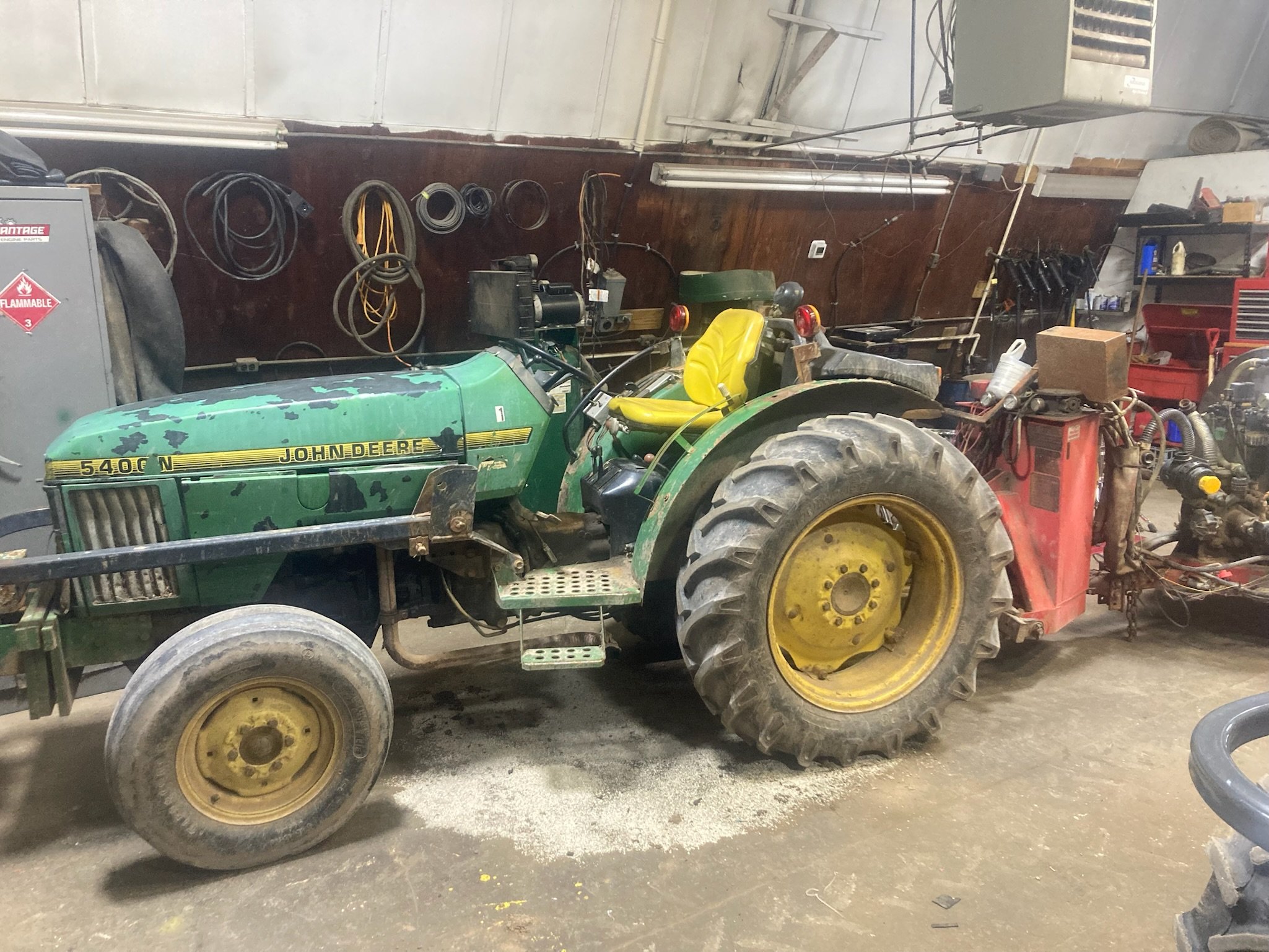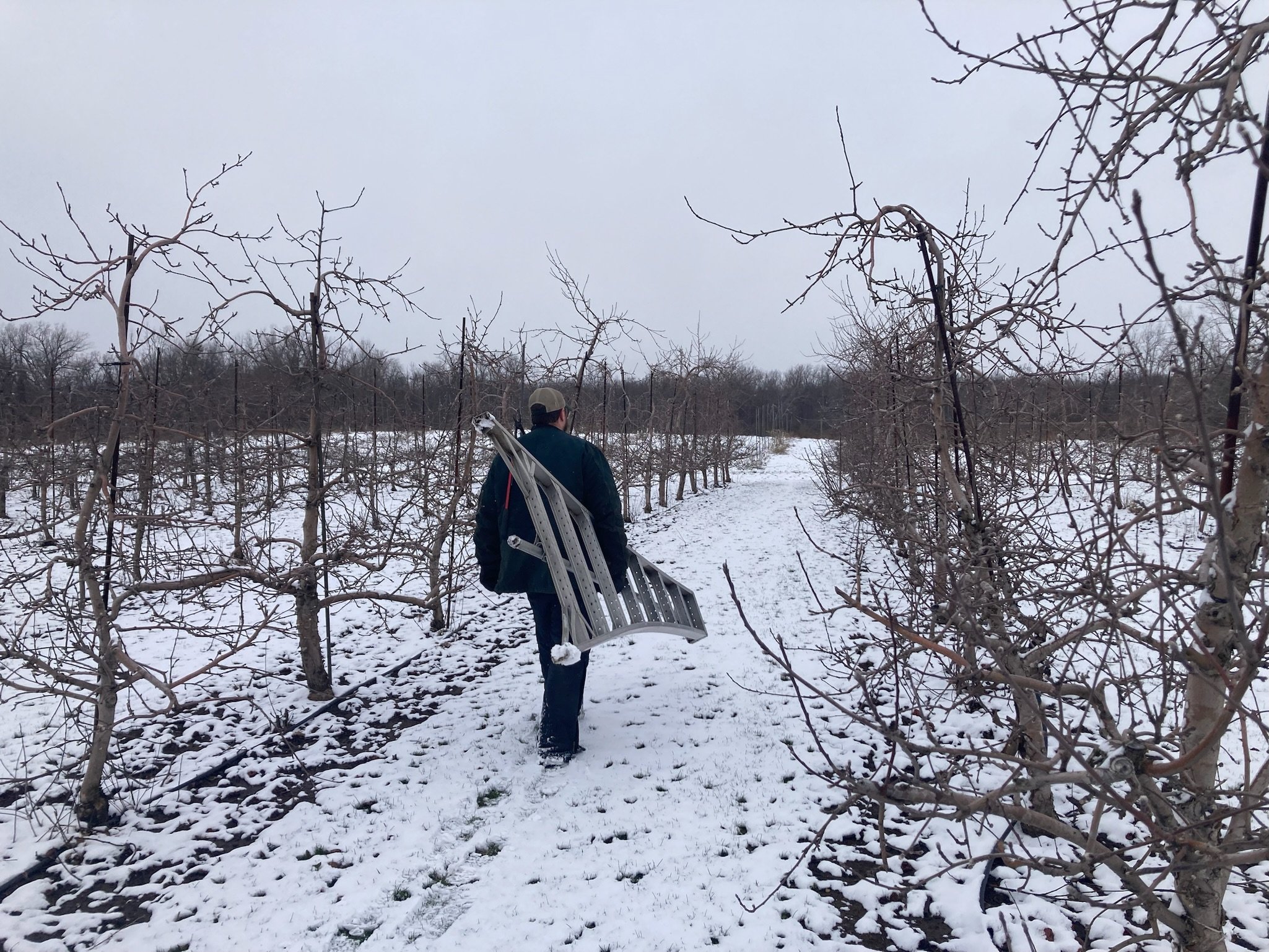Off-Season Era
We’ve had some crazy weather the past several weeks! Today it was snowing and blustery, with a frigid wind chill that made it feel well below freezing. But just a week ago, we had temperatures in the upper 60s and low 70s! And we’ve actually had a lot of those higher temp days in February and March which really pushes our trees out of dormancy. So, as of right now, we’re looking at a spring season that’s just about four weeks ahead of schedule! And that’s scary. That vulnerable plant tissue that is emerging way too early will be extremely susceptible to any temperature dips below freezing. So we’re definitely holding our breath right now, hoping for a mild spring with no surprise winter weather.
This early spring also means that we’re scrambling to finish up our off-season tasks a month earlier than we normally would. Off-season tasks, you ask? Don’t we just take a nice long vacation from November to April? A long winter’s nap? NOPE! Apple growers work year-round, although the intensity of the workload ebbs and flows with the seasons. Obviously, harvest season is the busiest – our labor force quadruples, there are thousands of bushels of apples to get off the trees in a very short window of time, our Upick is bustling and open daily, farmer’s markets every weekend, etc. Spring is also pretty busy – planting new trees, pruning our stone fruit crop, protecting the trees from weather and disease, and more. Our winter season is a little slower paced… a welcome rest from the chaos of fall, and a time to recuperate before the growing season begins again. But there’s still a lot of work to be done!
There’s plenty of office work to be done during the winter months – catching up on paperwork after the whirlwind of harvest, taking inventory of material needs and placing orders, planning for the influx of labor in the upcoming season, prepping and filing taxes, reviewing and finalizing production and crop records, billing and wages, and more!
The off-season months are the best time (the only time really!) to give our machinery a tune up – oil changes, fixing lights, replacing filters and broken parts, greasing bearings and pivot points, fixing leaks, etc. We have 15 tractors that need to be in top shape once the growing season starts, not to mention farm trucks, delivery trucks, worker vehicles, sprayers, and pruning platforms. Our mechanic has a lot on his plate!
Winter is also a time for education and outreach. Our workers regularly attend fruit classes put on by the local Cornell Cooperative Extension as well as agriculture conferences across the state. Christopher (president of the farm, production manager, and head grower) and Jonathan (Christopher’s brother, vice-president and head winemaker for our sister company Leonard Oakes Estate Winery) also make their yearly quest to Albany to advocate for fruit growers and winemakers in New York, sharing their experiences and struggles in a difficult industry and joining other ag professionals from all over the state in pushing for support from our lawmakers. These experiences not only keep our business on the cutting edge of advancements in fruit growing and changes in labor laws, but it’s a great opportunity to network with other growers and craft beverage producers across the state.
We’re also still working on SELLING the crop that we so feverishly worked to grow and harvest last year! So much of our labor and finances are spent during September and October. But remember, then we put all those thousands of apples into cold storage until they’re ready to be sold. The selling of the previous crop happens November through April – and we have to work at it! We’re constantly looking for new markets for our fruit – whether it’s through our wholesale avenue where our big bins of apples are sold to distributors by the truckload or through our own packing line where our diligent and hardworking staff hand pack every single LynOaken Farms bag or box of apples that are on store shelves. (I’ll talk more about our packing line another time!).
But probably the majority of our time in winter is spent pruning. Every single tree on every single acre of our farm is pruned every single winter. Pruning always happens in the dormant season – not only is it when we quite simply have the time to do it, but we’re not negatively impacting the tree’s photosynthetic capabilities and, with no leaves on the trees, we’re able to get a really good look at the branch structure and we can maximize the tree’s potential with just a few strategic cuts. When we are pruning, we’re looking to increase air circulation (for disease prevention) as well as light penetration (for photosynthesis and better fruit ripening conditions). The best quality fruit is produced on two and three year-old wood, so annual pruning of older limbs ensures a steady supply of future fruit-bearing wood.
Selfishly, I am sad to see winter go! I love the extra time with our family (it’s the only time of year when we regularly get TWO weekend days off of work!), I love seeing my husband without the stress of the growing season constantly weighing on him, I love sleeping a little later on schooldays because he starts his workday a little later and can take the kids to school in the mornings! But, I also know that the frenzy of the rest of the year makes this time so much sweeter. I know there’s nothing more fulfilling than watching the trees change through the seasons, seeing the full circle of tightly closed buds change to beautiful flowering blossoms that change to baby fruitlets swelling on the trees that end up as perfectly ripened fruit, feeding and nourishing our family and yours. And that, at the core, is why we are farmers.






